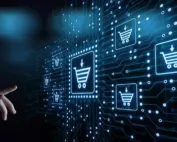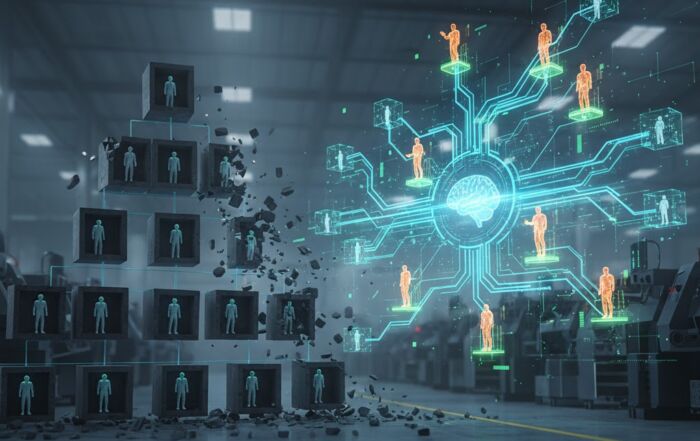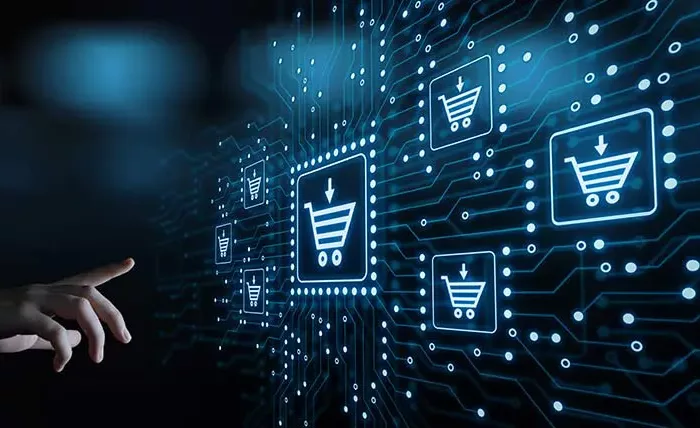Share
Author
George Anderson
Share
In the wake of pandemic-driven disruption, organizations are scrambling to launch B2B commerce fast. Customer expectations have changed in B2C and B2B, and old methods of doing business — like phone, fax, email or in-person meetings — aren’t cutting it anymore.
Clearly, it’s time to move commerce online. And you need to do it fast.
But how do you know if an accelerated solution will work for your use case?
Here are four questions to help you narrow things down.
1. Are you launching a proof of concept or a permanent solution?
2. How much ERP integration do you need?
3. How important is it to have a unique UX (user experience)?
4. Can your IT team support your B2B eCommerce plans?
1. Are you launching a proof of concept or a permanent solution?
It’s fairly easy to launch a standalone proof-of-concept in B2B commerce using Shopify or Bigcommerce. Solutions like these will give you a great-looking user experience, and you can launch them without engaging your IT organization (assuming there won’t be any ERP integration).
But a proof-of-concept isn’t a permanent solution.
That’s especially true when it comes to ERP integration. For true B2B use cases (in which customer-specific ERP data and logic are essential to completing transactions), a standalone proof-of-concept usually won’t stand the test of time. It will need to be replaced — and ERP integration will need to be at the core of that replacement.
If your goal is simply to launch fast, you’ll want to push a little farther. What are you launching fast? A proof of concept, or a permanent B2B commerce solution?
If it’s just a proof-of-concept, then the field is wide open. You can choose any low-effort, low-cost B2B commerce solution.
If you need to launch a permanent solution fast, you’ll need to think carefully about two aspects of B2B commerce. Your ERP integration, and your front-end user experience.
2. How much ERP integration do you need?
In the world of B2B commerce, “launching fast” and “ERP integration” don’t usually appear in the same sentence. Conventional platforms like Salesforce B2B Commerce or Magento will require a connector to duplicate and synchronize data (and business logic) between B2B commerce and the ERP. While these connectors promise out-of-the-box functionality, they’re usually anything but. We’ve seen organizations struggle for years to integrate Magento and SAP ERP.
Because ERP integration is so central to business functioning, it’s a good idea to map your requirements here first. Will your customers use B2B commerce if it doesn’t show the right pricing? How about if inventory information is always out of date, or customers can’t get their real-time credit status? What about online invoice payments — will B2B commerce support that, with real-time clearing in the ERP?
Here’s a short list of features typically required in B2B use cases. All of these depend on ERP integration.
- 100% accurate contract pricing for every customer, every product and bundle of products, every time.
- 100% accurate customer-specific catalogs and picklists driven by SAP ERP business rules.
- Real-time inventory availability from SAP, including support for any customer-specific personalization rules.
- Intelligent error messaging from SAP to help the user correct any issues with the order (wrong SKU, wrong quantity, and so on).
- Only 100% error-free orders posted from B2B commerce to the ERP.
- Real-time credit status (so customers can keep their accounts in good standing).
- Real-time order history and status, plus shipment status, so customers can track orders through self-service (rather than calling customer service).
- Real-time invoice history and status, plus self-service payments with real-time clearing in SAP.
If your customers need any of these features in B2B commerce, you’ll want to think carefully about the goal of launching fast. Connector-based integration won’t provide this functionality quickly.
If you need to launch fast with deep ERP integration, check out Corevist Commerce. Our platform includes prebuilt, configurable integration for SAP ERP so you don’t have to reinvent the wheel.
3. How important is it to have a unique UX (user experience)?
Broadly speaking, B2B use cases usually fall somewhere on a spectrum when it comes to UX (user experience). At one end, you have B2B commerce that looks exactly like B2C with publicly-viewable catalogs and no customer-specific business rules. In this type of scenario, UX can actually be a competitive differentiator.
Hint: A unique UX takes more effort to create than a template-based look and feel. If you want to launch fast, you may have to compromise on the uniqueness of your UX.
At the other end of the spectrum, you have true B2B use cases — like manufacturers selling to dealers and distributors. In these scenarios, ERP integration is more important than a unique UX because every customer has unique contract pricing, inventory availability and purchasing permissions. Launching fast won’t do you much good if the solution doesn’t support that complexity.
This is the use case that Corevist serves. Our solution includes deep, prebuilt SAP ERP integration that brings customer personalization to the web. We provide our solution under a multi-tenant SaaS model, meaning your branded UX adheres to a template. In the backend, your portal is integrated to your own SAP system in real time, with configurations specific to your business.
Wherever you fall on the spectrum, you’ll want to define your UX needs carefully. The more custom you go, the more difficulty you’ll have in launching fast.
4. Can your IT team support your B2B commerce plans?
You’ve interrogated your ERP integration requirements and your UX needs. You’ve determined whether you’re launching a proof-of-concept or a permanent solution. Hopefully your path is getting clearer.
Whatever you land on, you’ll need to look carefully at your available internal resources. If you need to launch a permanent B2B commerce solution quickly, and you need comprehensive ERP integration, do you have the IT resources on hand to build that integration? How about supporting it after GoLive?
In these scenarios, a managed solution with prebuilt integration makes the most sense. This is the model we follow here at Corevist. All our solutions include real-time integration to your SAP ERP system. Since Corevist reads and writes SAP data directly, in real time, there’s no third platform sitting between SAP and B2B commerce. Your IT team simply continues maintaining SAP ERP as they do today, and the relevant data and logic always appear in Corevist Commerce.
Want to see deep SAP integration in B2B eCommerce?
Check out the Corevist Commerce demo video.
Real-time SAP data in a sleek, mobile-friendly UI that’s built for B2B use cases.










